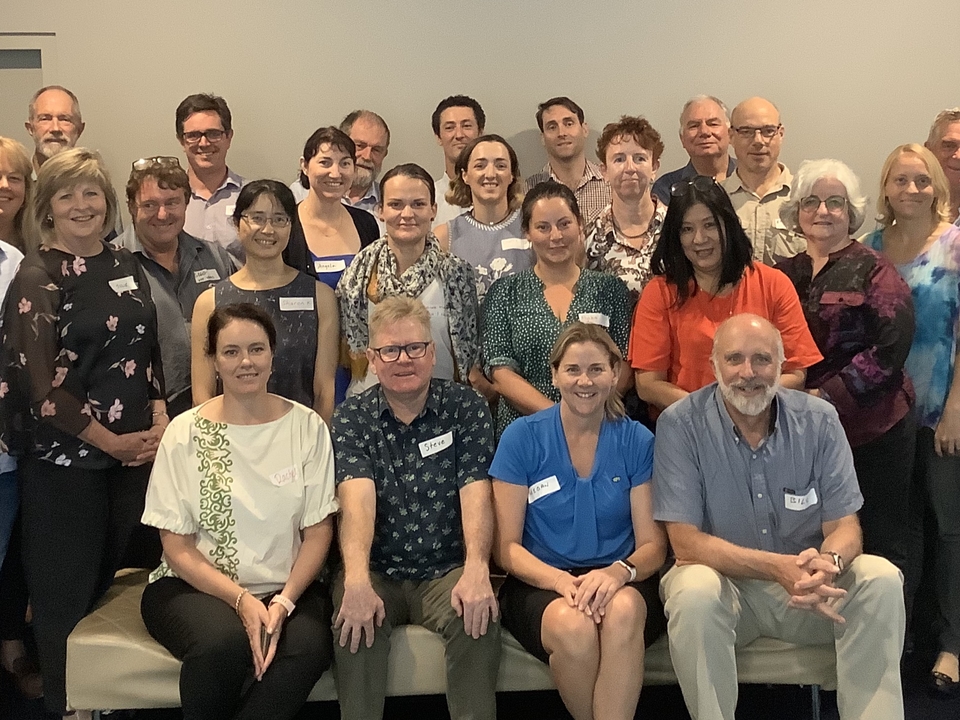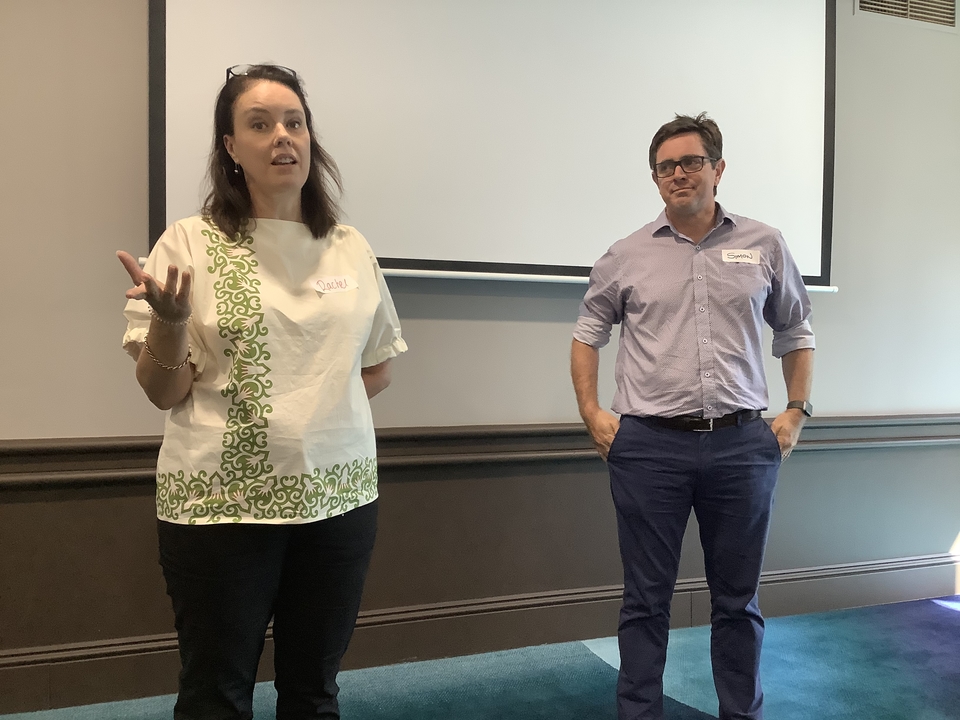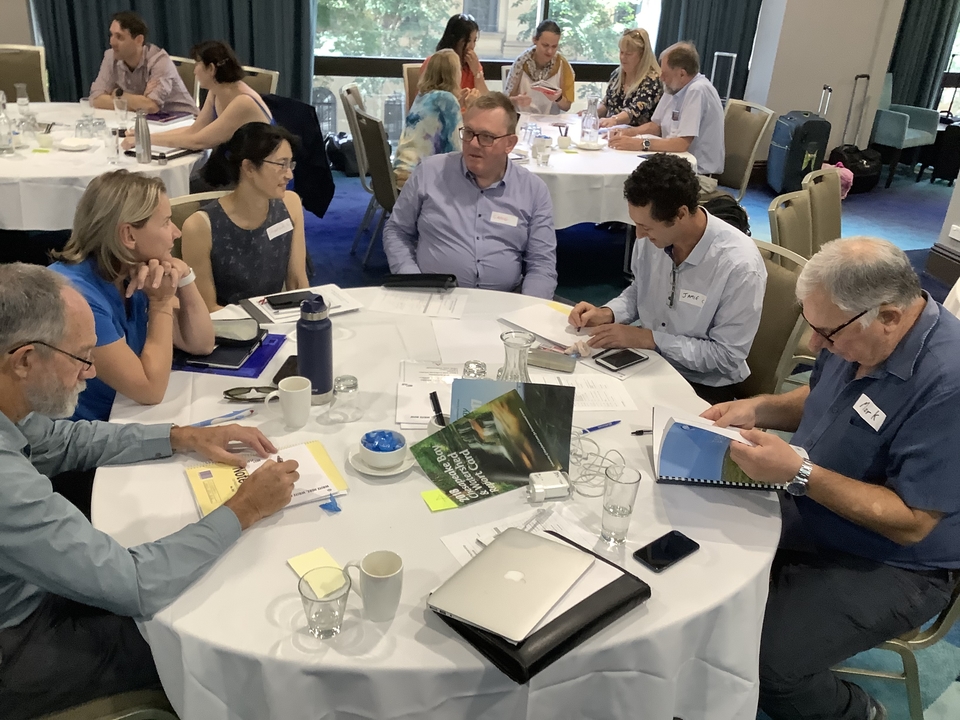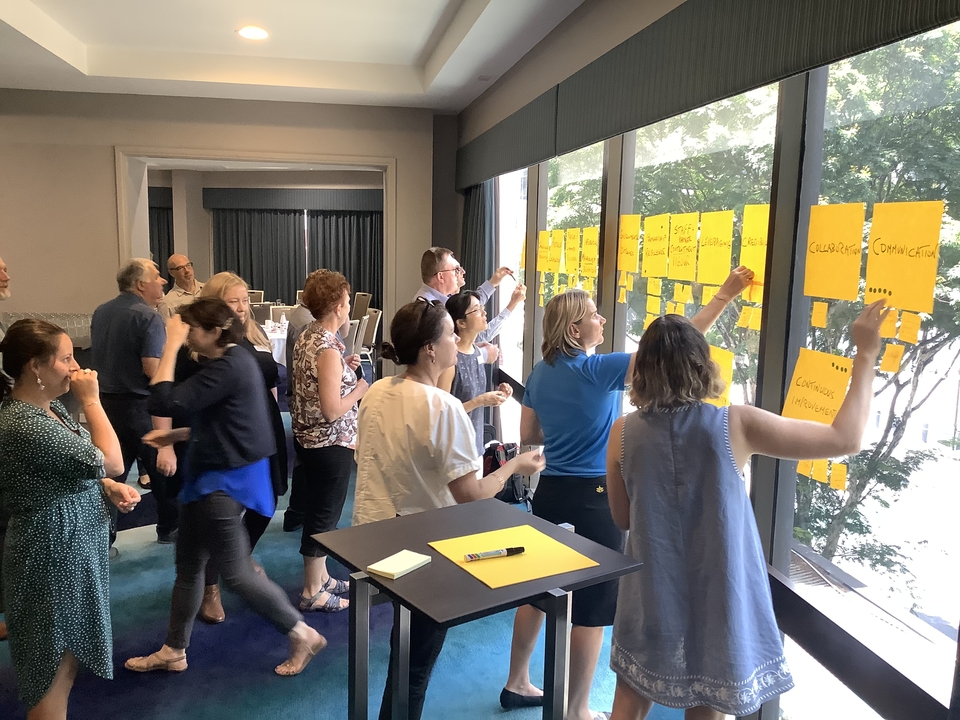Facilitating a Great Barrier Reef partnership workshop in Brisbane
Bill Dennison ·
Simon Costanzo and I co-facilitated a workshop for the Office of the Great Barrier Reef to develop a reporting framework for the Great Barrier Reef partnership. This reporting framework was not for the Great Barrier Reef itself, rather for partnership. This is the third institutional assessment that we have conducted; our Integration and Application Network report card was the first and the University of Maryland Center for Environmental Science institutional assessment report card was the second. Partners from five regions along the Queensland coast participated in the workshop: Wet tropics, Dry tropics/Townsville, Mackay/Whitsundays/Isaac, Fitzroy, and Gladstone Healthy Harbour. The workshop was held in Brisbane on Feb. 14 (Valentine's Day).

We started off by using mentimeter.com to generate a word cloud of key partnership attributes, with collaboration, engagement, learning and sharing coming up as the most commonly used words. This was an encouraging start to the workshop. Rather than a traditional round robin of introductions, we had an activity to introduce the teams and their region. We broke into five groups, based on the five regions and each group used colored pencils to sketch a two-dimension cross section of their region. Then each group introduced themselves along with displaying and explaining their sketch. They depicted multiple pressures, like agricultural runoff, sedimentation, mining impacts, shipping, industry, and there were many creative versions of cattle depicted. We established a bit of a controversy over which region had the most registered boat users. I appreciated that fish, sharks, manta rays, sea turtles and dugongs were depicted, as well as mangroves, seagrasses and corals.
Simon led a session of SNAP!, in which the participants identified and then voted on indicators for the partnership. This led us to generate a pyramid of indicator categories, with the foundation category being 'People', the 'Credibility', 'Resilience', and 'Relevance' stacked on top, and 'Communication' at the peak of the pyramid. The 'Communication' category is intended to lead to behavior change. Each level of the pyramid requires more synthesis.

Following SNAP!, we had break out sessions to brainstorm each category with a report-back session. For the 'People' category, partner engagement/satisfaction, organizational culture/vigor, and partner diversity were identified. For the 'Credibility' category, peer review, independence, representativeness, and effective communication were identified. For the 'Resilience' category, long-term sustainability, income diversity, financial forward planning and management were identified. For the 'Relevance' category, report card usage, community/partner satisfaction, management influence, community representativeness and data comprehensiveness were listed. In the 'Communication' category, partner engagement, advocacy, influence on extension, engaging community, and development of materials were listed. There was a lot of overlap and decisions will need to be made as to which categories the different indicators will be assigned.

We storyboarded a six page partnership report card and sketched out a timeline for completion of this assessment. The post-workshop session was held in the rooftop bar of the hotel where we held the workshop overlooking King George Square in downtown Brisbane. But before we ended the workshop, we had a special musical event. Jamie Corfield, who works in the Office of the Great Barrier Reef, collaborated with me on a version of GANGgajang's, "Sounds of Then (This is Australia)," song. Jamie Corfield brought along a speaker and a fiddle so that he could cover the instrumentals and accompany our sing-along. It was a great rendition in spite of my obvious lack of musical talent.
Sounds of Then
14 Feb 2020
William C. Dennison and Jamie Corfield
I think I hear the sounds of then and people talking
The Office of the Great Barrier Reef
Where science feeds into management
That certain linkage, that story tell
To sit and meet with familiar folks
In conference rooms in Queensland
Focusing on the Great Barrier Reef
That certain linkage, that story tell
Brings home the heavy days
Brings home the nighttime swells
Out on the outer reef we'd swim
And the SCUBA air we'd breathe
We'd watch the turtles and schooling reef fish
And laugh and think, "This is Australia"
The reef is long, running northwest
Bleaching inshore and offshore, too
And over the distance, through the heat haze
Corals dying from the hot sun's rays
That certain linkage, that certain bond
Allowing us to respond
Cha-kow
Out on the outer reef we'd swim
And the SCUBA air we'd breathe
We'd watch the turtles and schooling reef fish
And laugh and think, "This is Australia"
To sit and meet with familiar folks
In conference rooms in Queensland
Focusing on the Great Barrier Reef
That certain linkage, that story tell
That certain linkage, that certain bond
Allowing us to respond
Cha-kow
Out on the outer reef we'd swim
And the SCUBA air we'd breathe
We'd watch the turtles and schooling reef fish
And laugh and think, "This is Australia"
About the author
Bill Dennison

Dr. Bill Dennison is a Professor of Marine Science and Vice President for Science Application at the University of Maryland Center for Environmental Science.

